This is a step-by-step “how to” guide on local optimisation strategies to ensure your business gets the local attention you need in Google search. But first of all, we need to define what local optimisation is and why it’s important.
Place-related searches are displayed when a search indicates intent to find a local or nearby business that can provide the product or service at the time of the searchers need. Google analyses the search terms used and the location of the searcher to deliver the most relevant results as possible. So when you search for “Taxi companies”, Google recognises that the search infers local intent as the user may be looking for a taxi near their location and displays the most relevant organic search result below the places listings on Google Maps.
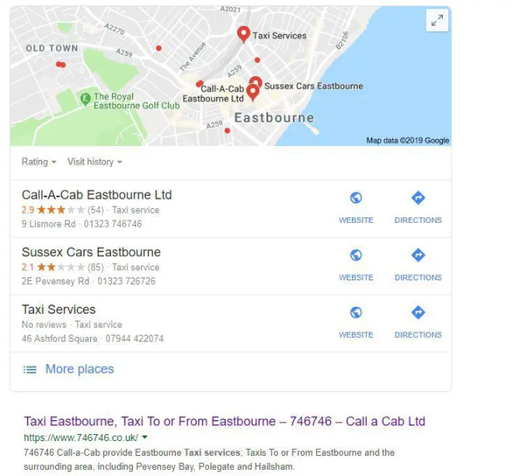
One of the chief benefits of local is that you’re only competing with your local competitors, near you. Bigger companies who may have a much stronger backlink profile and greater domain authority than you will struggle to rank above your smaller, local business for these types of searches as the local context of the search effectively rules them out if they aren’t nearby. This makes local search engine optimisation a vital part of small and medium businesses marketing strategy.
In addition to this, have a places listing on Google Maps means that users of this platform can find directions to your business easily, helping with any footfall to your local shop, store or office.

Local searches are increasing
No surprises, with an ever increasing amount of browsing and searches occurring on smartphones there’s been a surge in local searches in Google. More often, we’re seeing keyword searchers that include local intent, for example “near me”, “nearby”, “closest”, “local” and “open now”.
So, what are the local ranking factors?
1. Relevance
As with all organic search results, the most important ranking factor is relevance. Is your business a relevant result for the searched keywords? Does your business match what the searcher is looking for?
2. Distance
What is your proximity to the search? How far or near are you to the location of the searcher? If you’re both relevant and nearby, then you should achieve a good rank in search engine results.
3. Prominence and authority
How well is your business known? Do you have many reviews? What is the state of your backlink profile? Are there local backlinks referring to your website?
Step 1: Make your website more relevant to local
Include location-based keywords throughout the content of your website, having the address in the footer just isn’t enough – you’ll need to be clever in your content writing, alt and title text on images, page title and meta descriptions and even in your site architecture i.e. the way you structure your URL’s across pages.
Focus on your specific keywords using the optimal TF:IDF keyword frequencies to ensure your content is highly relevant to searches occurring in Google. To help identify what keywords are being searched for, here’s some useful tips:
- Listen to the words your customers use to describe your services, whether that be in meetings or over the phone or in submitted webforms
- Use Google’s Keyword Planner to find suggested keywords and trends
- Perform a Google Search and analyse the “Searches related to” section

Step 2: Page titles and meta descriptions
Page titles, or Title tags, should include your primary keyword related to the pages content and give the user an immediate snapshot of what content is on the page. They display in Google Search as the larger, blue text in the results above the URL and meta description.
The meta description is the smaller, black text under the Title tag and URL in search results, again it is really helpful to optimise this so that your keywords or semantically relevant words appear here.
Step 3: Google My Business (GMB)
A useful tool for informing Google of your business location, contact information, opening hours, business categorisation and more. By creating and verifying a Google My Business listing for you business you’ll also benefit from a Google Maps result which will display in local searches and enable users to get directions.
Google My Business is an effective way of directing calls and footfall to your business without even sending visitors to your website.
GMB is a free product that allows business owners to verify and submit basic details about their business to Google. Owners can also engage with existing and potential customers across Google’s properties, such as Google Maps.
To create a Google My Business listing, visit this page: https://www.google.com/business
Step 4: Facebook
It’s possible to add your business to Facebook in a similar way to Google My Business so that you can appear in any local searches for your business.

To create a Facebook business page, go here: https://business.facebook.com
Step 5: Local directories
Search engines use other local directories such as Bing!, Yelp, Yell (there’s loads more!) to determine just how relevant and local you are. It’s important to list your business details including address information and website links in as many authoritative local directories as possible.
Adding your business to local directories can take time, so tackling this task monthly to ensure a consistent and steady growth in your local profile is a good approach.
Step 6: Reviews
Build a strong review profile by directing as many happy customers to review your business as possible. Use the Google My Business listing as a review engine for your business by providing your cusomters with a direct link to review your business. Google Support provide info on how to create a link for customers to write reviews. In addition, using other review engines such as Trustpilot or Feefo will certainly be beneficial in building your review profile. Reviews also are an influencer that can positively improve conversion rates, encouraging prospects to make the decision to get in touch with your business or make that purchase.
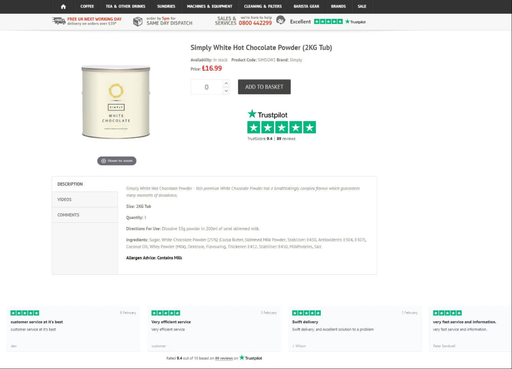
Want to find out more about optimisation?
To find out more about our digital marketing services and to discuss your requirements, call us on 01323 735800, or email enq@barkweb.co.uk, alternatively you can fill in our contact form and we will get back to you.
Step 7: Links from other local businesses
If other local businesses relevant to you link to your website then this also helps with your local presence. Building a strong, relevant backlink profile locally will help refer local visitors to your website whilst also ensuring that search engines can identify that your business is strongly networked in a local area.
Step 8: Social mentions
When your business is mentioned in comments, posts or tweets, search engines see this chatter as one aspect of relevancy. A simple way of looking at this is if people are talking about your business then you must be relevant, right? By increasing the amount of social media posts that link to your website and mention your business you’re not only improving the chances that your business will be found by prospective customers on social media channels, but you’re also helping improve your organic ranking.
Step 9: Improving your website’s crawlability
A quick method for analysing your website’s current crawlability is to conduct a site search in Google by using “site:yourdomain.co.uk”. For example, let’s take a look at our local taxi client Call a Cab Ltd (746746):
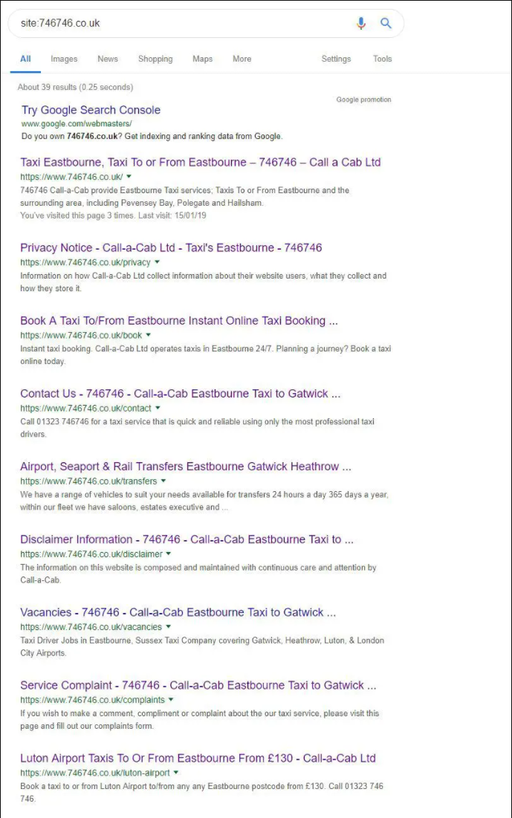
So, 746746.co.uk has “About 39 results”. This is the number of pages that Google crawlers or bots have discovered and placed into the Google index and indicated the level of crawlability of the website i.e. if there’s 100 pages and only 39 pages have been indexed then why is this?
A helpful tool for analysing your websites crawlability is Google Search Console.
A website that’s easy to crawl means a better chance for ranking higher in search engines. Simplifying the process of getting in touch, generating sales, making bookings or transactions on whichever page the user finds themselves on helps to improve customer experience and makes it easier for search engines to navigate the site structure too.
Step 10: Ensuring consistency
Making sure your business information is consistent across your website, Google My Business, Facebook and other social media channels and local directories is critical in ensuring higher rankings in Google Search. Making it easier for the crawlers and bots to establish that link throughout the internet with your business will really help with your relevancy and prominence, which are two key factors in determining your local ranking.
Step 11: Schema markup
Using the “local business” schema markup is virtually similar to handing Google your companies business card. We use JSON LD generated schema markup out of the box on our platform Jolojo to provide all our clients with local business markup as easily as possible. Check out our recent guide on how to add JSON LD schema markup to your website.
A useful tool for analysing your websites schema is Google’s Structured Data Testing tool.
Step 12: Make your website mobile friendly
A premise of local optimisation is that you want to attract local website traffic and a key aspect of this is mobile, the passers by, people near your shop or office. To get started, you’ll want to first test your website’s current “mobile friendliness” using Google’s mobile test tool. This useful tool will identify any sub-optimal features and a path to optimising them with suggested changes, and also render a mobile version of your site so you can check the appearance of your website to mobile users.
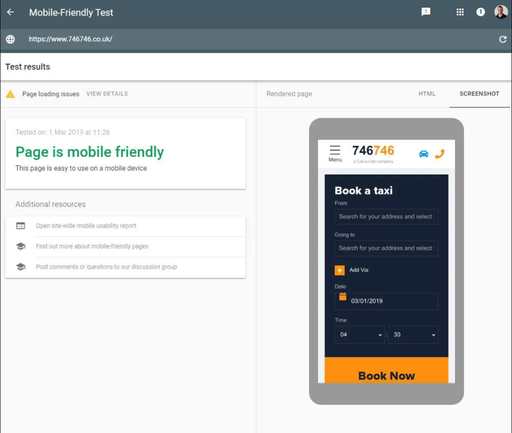
Secondly you’ll also want to check the mobile site speed and page speed of your website, again Google provide a helpful tool for this called Test My Site.
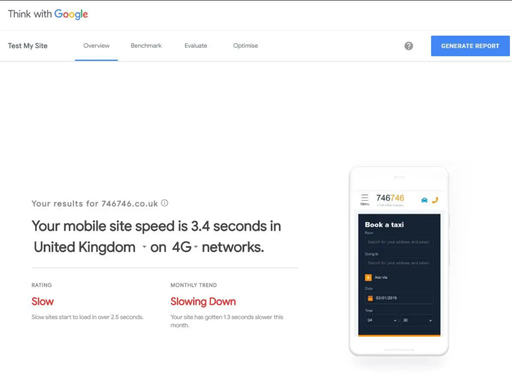
For a full guide on mobile optimisation, visit https://developers.google.com/search/mobile-sites/
Identifying ways of improving your websites performance on mobile is the first step, making the relevant changes to attain a better performance in mobile is the crucial next step.
Speeding up your website will no doubt be an important aspect of your mobile optimisation strategy. Another handy tool to use to help identify speed improvements is the Pagespeed Insights.
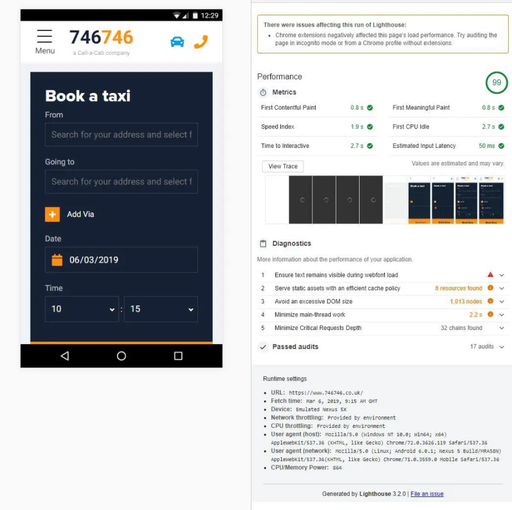
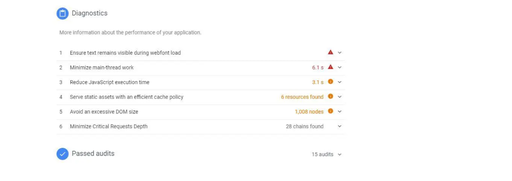
Let’s recap
- Make your website relevant to local by using location-based keywords throughout your website, within content, alt and title tags, anchor text, and in page titles
- Optimise your title tags and meta descriptions
- Setup a Google My Business listing
- Create and develop a strong social media presence
- Create backlink profiles from local directories
- Encourage a strong review profile of your business online using a recognised review engine like Trustpilot
- Build links from other local businesses into your website
- Encourage social mentions by publishing engaging content and getting involved in discussions and communities on social media channels
- Ensure search engines can crawl your website effectively
- Brand consistency online to build a strong impactful and undiluted presence
- Schema markup to help search engines understand the context of your business
- Mobile-friendly, so that you rank highly for local searches occurring on smartphone and that website visitors are delivered the optimal experience
Want to optimise your website for local, but don’t have the time to do it yourself?
Get in touch with us, on 01323 735 800 or email enq@barkweb.co.uk